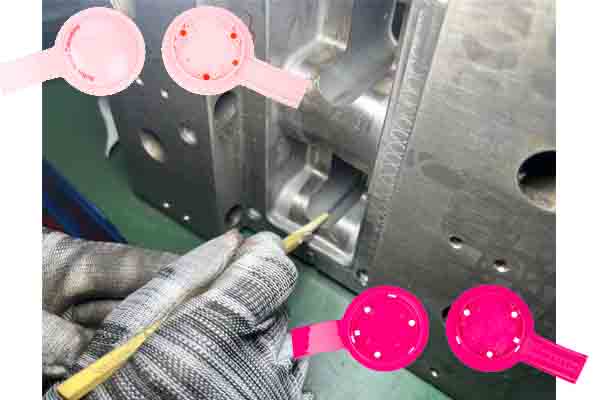Company dynamics
Quality improvement methods of micro-foam injection molding
Precision injection molding company in process adjustment
Injection rate: Increasing the injection rate can increase the porosity and reduce the cell diameter;
Injection amount: For melts with weak nucleation ability, increasing the injection amount can limit the foaming space; for melts with strong nucleation ability, appropriately reducing the injection amount can provide a certain foaming expansion space and obtain smaller cell size;
Melt temperature: If the melt temperature is too high, the viscosity will decrease, the ability to resist cell deformation will decrease, and the cell diameter will be larger and the shape will be irregular;
Mold temperature: A higher mold temperature can help increase cell density and reduce skin thickness, but too high a temperature can easily lead to larger cell diameters and coalescence.
Foaming process adjustment
In the micro-foaming injection molding process, the volume of the single-phase melt injected into the cavity is smaller than the cavity volume to provide excess space for foaming. The operation is simple, but due to the influence of shear flow and temperature inside the cavity, the gas loss is large and the cell structure is inconsistent, resulting in the loss of mechanical properties.
Injection pressure foaming: The single-phase melt is first injected into a partially opened mold cavity, using the excess space to foam and then compressed to the required sample thickness by relying on the clamping force in a very short time. After the melt is filled, the pressure applied increases the melt pressure inside the cavity, increases the critical nucleation radius, and redistributes the cell sizes inside the product and becomes consistent.
Delayed secondary mold opening and foaming: Delay for a few seconds after the melt fills the mold cavity to open the movable mold to the required thickness in the thickness direction, freeing up space for foaming, which can increase the crystallinity of the crystalline material. The formation of early crystals increases the gas concentration around the crystals, which can promote the nucleation of cells.

Polymer blending
Polymer blending is of great significance in controlling the foaming morphology. Through blending, the material can maintain its own properties while also providing additional properties through synergistic effects. For example: increasing the solubility and diffusion coefficient of gas in the matrix and increasing melt viscosity, etc.
Add filler
Different from homogeneous nucleation, the addition of fillers will trigger heterogeneous nucleation of the foaming system to improve the foaming morphology. Its specific functions can be summarized as follows: significantly reduce the critical free energy barrier for system nucleation; increase the nucleation point of the system; increase the viscosity of the melt, produce a strain hardening effect, and effectively inhibit the growth and merger of cells. There are many types of fillers currently available, such as nano-calcium carbonate, nano-clay, SiO 2 , carbon nanotubes, etc., among which nano-clay is the most widely used.
Different filler sizes, shapes and dispersion states have different effects on the foaming effect. Many studies have shown that after adding nanoparticles, the cell size can be reduced by 1 order of magnitude and the cell density can be increased by 2 to 3 orders of magnitude.
Categories
Blog
Contact Us
Contact: plastic injection molding Company
Phone: +86 181 6575 9852
Tel: +86 755-27164277
E-mail: windward@seaiint.com
Add: Northwest of Huihao Industrial Park, No. 1, Chuangwei Road, Guangming District, Shenzhen

